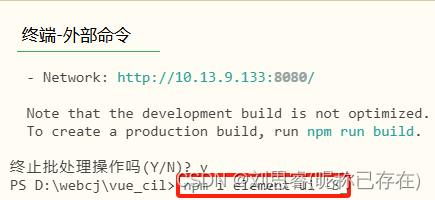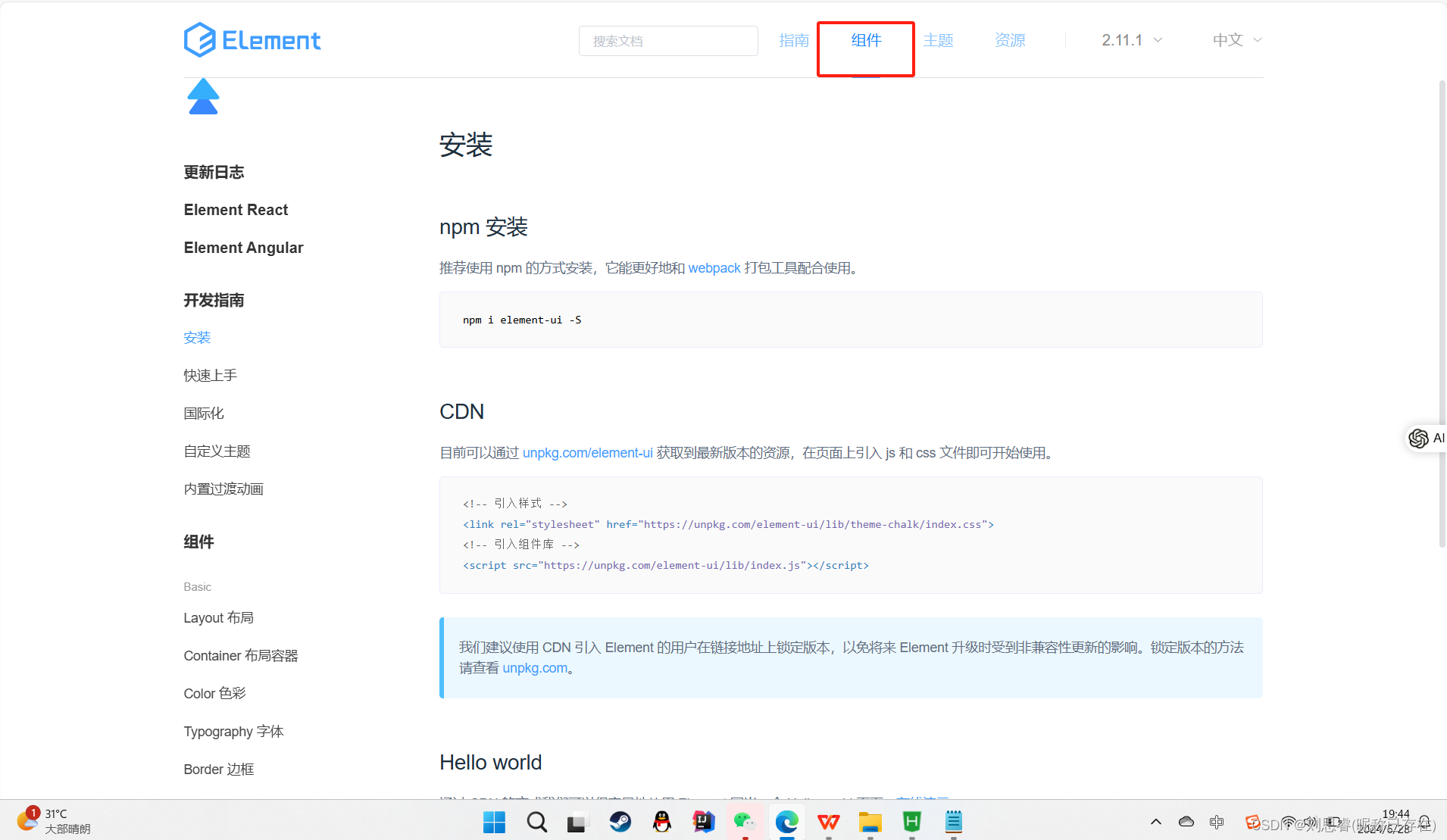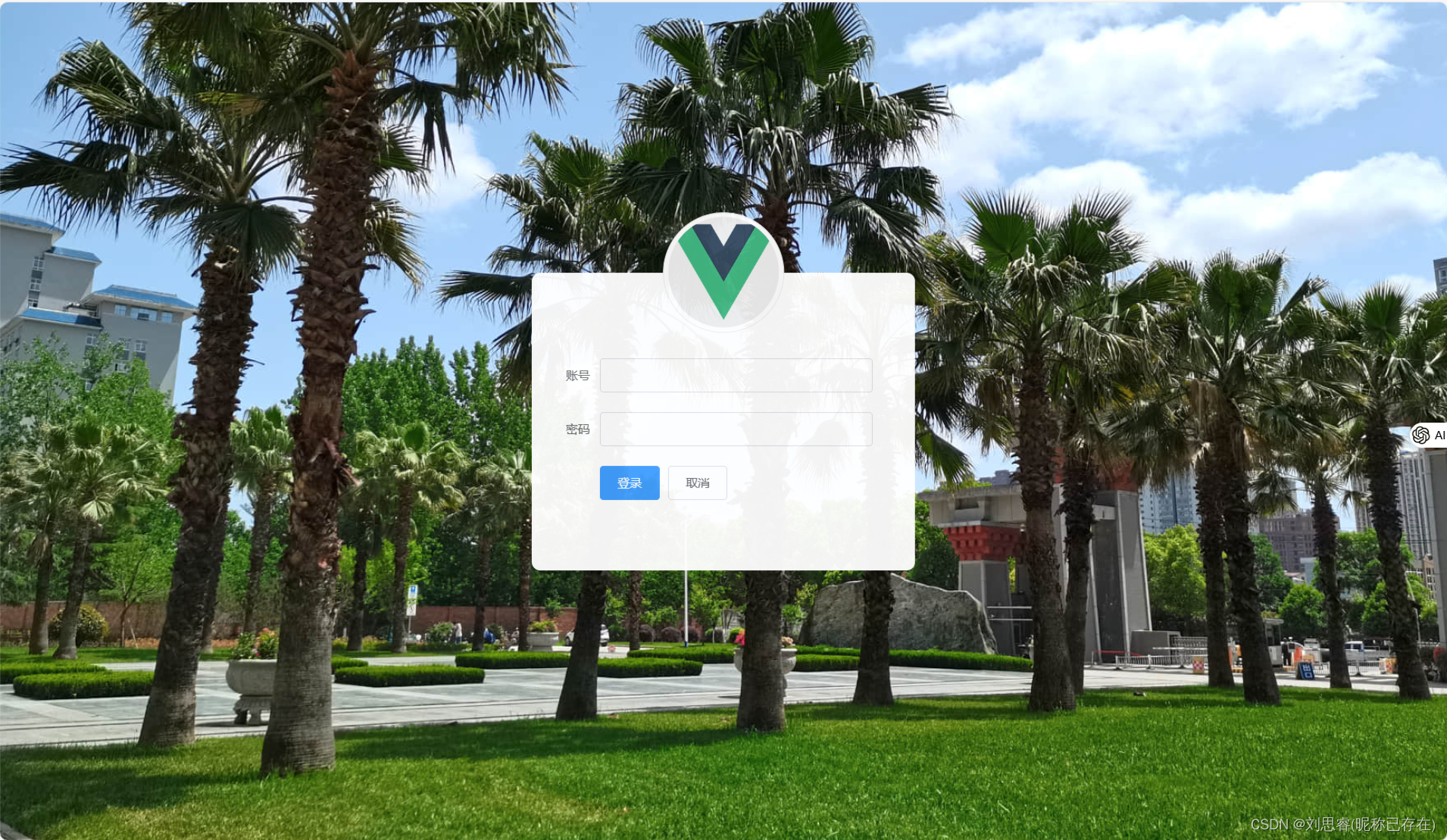目录
Element,一套为开发者、设计师和产品经理准备的基于 Vue 2.0 的桌面端组件库.
安装ElementUI
1.导入ElementUI
在创建的vue-cil项目中,打开其终端并输入:npm i element-ui -S

在vue-cil项目中找到main.js文件,输入如下代码:
import ElementUI from 'element-ui';import 'element-ui/lib/theme-chalk/index.css';Vue.use(ElementUI);new Vue({render: h => h(App),}).$mount('#app');

完整代码如下:(上面的导入路由组件,是一个vue-cil项目的基本项,详情见本人上篇博客:vue-cil项目的创建)
import Vue from 'vue'
import App from './App.vue'
Vue.config.productionTip = false
//导入组件路由
import router from './router/index.js'
Vue.use(router);
/* 导入ElementUI */
import ElementUI from 'element-ui';
import 'element-ui/lib/theme-chalk/index.css';
Vue.use(ElementUI);
new Vue({
el: '#app',
router,
render: h => h(App),
}).$mount('#app')2.导入插件测试
ElementUI官网:https://element.eleme.cn/2.11/#/zh-CN

我们进入官网后,在其组件部分可以看到大量组件,选择其中一个进行测试。
这里我利用其组件完成了一个简易登录窗口:
<template>
<div class="login_container">
<!-- 登录盒子-->
<div class="login_box">
<!-- 头像盒子-->
<div class="img_box">
<img src="./assets/logo.png" />
</div>
<!-- 登录表单-->
<div style="padding: 100px 0px;width: 400px;">
<el-form ref="form" label-width="80px">
<el-form-item label="账号">
<el-input v-model="account"></el-input>
</el-form-item>
<el-form-item label="密码">
<el-input v-model="password" show-password></el-input>
</el-form-item>
<el-form-item>
<el-button type="primary" @click="login()">登录</el-button>
<el-button @click="back()">取消</el-button>
</el-form-item>
</el-form>
</div>
</div>
</div>
</template>
<script>
export default{
data() {
return{
account:"",
password:""
}
},
methods:{
login(){
//前端验证账号摩玛不能为空
if(this.account.length==0){
this.$message({
message: '账号不能为空,请输入账号',
type: 'warning'
});
return;
}
if(this.password.length==0){
this.$message({
message: '密码不能为空,请输入密码',
type: 'warning'
});
return;
}
//与后端交互
//后端响应一个结果
this.$router.push("/main");
},
back(){
this.$router.push("/reg");
}
}
}
</script>
<style>
.login_container{
height: 100vh;
margin: 0px;
padding: 0px;
background-image: url(assets/bg.jpg);
background-repeat: no-repeat;
background-size: cover;
}
.login_box{
width: 450px;
height: 350px;
background-color: #fff;
border-radius: 10px;
position: absolute;
left: 50%;
top: 50%;
transform: translate(-50%,-50%);
opacity: 0.95;
}
.img_box{
width: 130px;
height: 130px;
position: absolute;
left: 50%;
transform: translate(-50%,-50%);
background-color: #fff;
border-radius: 50%;
padding: 5px;
border: 1px solid #eee;
}
.img_box img{
width: 100%;
height: 100%;
border-radius: 50%;
background-color: #eee;
}
</style>效果如下:

有关ElementUI的安装及其使用的介绍到这里就结束了,希望本篇博客可以给大家带来帮助!如有不同意见,欢迎在评论区积极讨论!